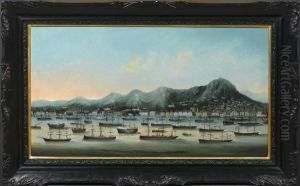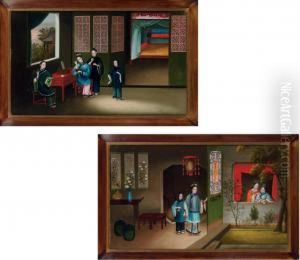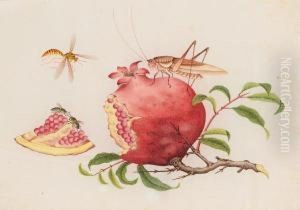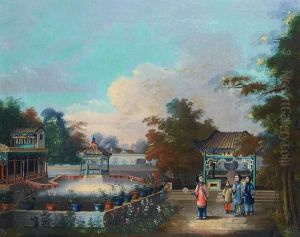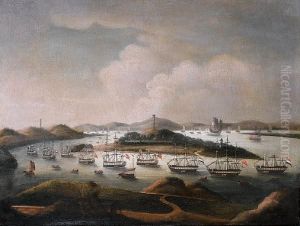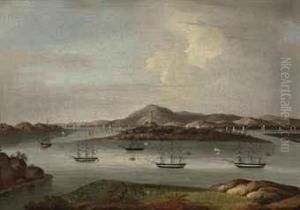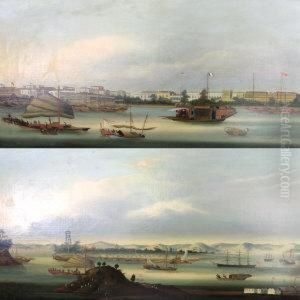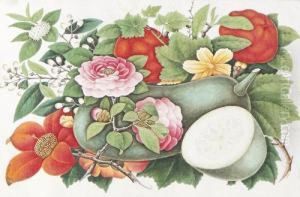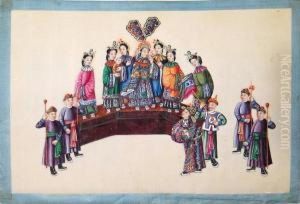You Qua Paintings
You Qua, a lesser-known but significant figure in the realm of Chinese export painting during the early 19th century, was born in 1777 and passed away in 1844. He was part of a family of artists that played a pivotal role in the development and flourishing of the Chinese export art market, especially in Guangzhou (Canton), which was the only Chinese port open to foreign trade until the Opium War (1839-1842) led to the opening of additional ports. His work and that of his contemporaries were primarily aimed at Western merchants and diplomats who desired souvenirs and artworks that depicted Chinese scenes, people, flora, and fauna, serving as cultural bridges between China and the West.
You Qua's oeuvre mainly consisted of detailed, delicate watercolors and gouaches, which were popular among European and American patrons. These artworks often included genre scenes, portraits, and landscapes, characterized by their meticulous attention to detail and vibrant colors. Unlike traditional Chinese painting that emphasized brushwork and monochromatic aesthetics, You Qua's style adapted to Western tastes, incorporating perspective and shading to create a sense of depth.
Though not as widely recognized as some of his contemporaries, You Qua's contributions to the genre of Chinese export painting were significant. He was part of the Cantonese school of painting, which was known for its commercial approach to art production, catering to the tastes and demands of Western clients. This period marked a unique chapter in art history, where cross-cultural exchanges influenced artistic practices and outputs.
After his death in 1844, You Qua's legacy continued through his family, with several descendants also becoming artists in the Chinese export painting tradition. Today, his works are considered important artifacts of cultural exchange, providing insights into the early interactions between China and the West. They are held in private collections and museums around the world, celebrated for their historical value and artistic merit.
